The best part of a road trip is that the joy is in the journey, just as much as it is in the destination! If you are planning a road trip from Flagstaff to Monument Valley, then here are 8 stops along the way that you’re not going to want to miss!
*Disclaimer: This post contains affiliate links. If you purchase a product or book a tour through the link then we receive a small commission at no extra cost to you. We really appreciate your support!
Arizona Road Trip: Flagstaff to Monument Valley
Table of Contents
- 1. Explore Flagstaff
- 2. Hike the Lockett Meadow Inner Basin Trail
- 3. Stop at Sunset Crater and Wupatki Ruins
- 4. See the Moenkopi Dinosaur Tracks at Tuba City
- 5. Discover a hidden gem at Coal Mine Canyon
- 6. Visit Navajo National Monument
- 7. Learn about the Code Talkers in Kayenta
- 8. Explore the beauty of Monument Valley
1. Explore Flagstaff
Before heading out on the road, take some time to explore the suburban mountain town of Flagstaff.
Visit historic downtown Flagstaff where you can take a walking ghost tour and experience the nostalgia of Route 66.
You can also take a star tour at Lowell Observatory and see the telescope that was used to discover Pluto.
Depending on what time of year you visit, AZ Snowbowl is one of the best ski resorts in the state. They also offer summer activities like tubing and a scenic lift ride.
If you’re visiting in early spring or after a monsoon storm, the nearby Chocolate Falls will be running in full force and is a sight to behold!
You can also bring a flashlight and explore the Lava River Caves that were formed by a river of lava almost a million years ago.
The nearby Red Mountain Trail will also lead you through a maze of fractured cinder volcano spires.
Older kids will love the thrill and challenge of the Flagstaff Extreme ropes course.
There are also a few museums for the whole family, including the Museum of Northern Arizona, the Pioneer Museum, and the Riordan Mansion House Museum.
And if you’re looking for a place to stay, I would highly recommend the High Country Motor Lodge on Route 66. Check Hotels.com and Expedia to compare rates.
For more details and recommendations, see our guide 10 Fun Things to do in Flagstaff with Kids!
2. Hike the Lockett Meadow Inner Basin Trail
As you head north on Hwy 89, make a pit stop to hike the Lockett Meadow Inner Basin Trail.
The 3-mile out and back trail leads through a thick aspen grove.
In the late spring and early summer, the rich forest provides a reprieve from the summer heat. In the fall, the leaves shimmer a radiant gold.
This is one of our favorite hiking trails in all of Arizona, but there are a few things you should know before your visit. See our Lockett Meadow Guide for all of the details and information.
3. Stop at Sunset Crater and Wupatki Ruins
The turn-off for Sunset Crater is located just across Hwy 89 from the turn-off for Lockett Meadow, so it’s easy to combine both stops on your road trip from Flagstaff to Monument Valley.
The last volcanic eruption from the San Francisco Peak volcanic field occurred in 1085 and resulted in the extinct cinder cone remains that are known today as Sunset Crater.
Visitors can take the 1-mile Lava Flow Trail along the base of the volcano. The short 0.3-mile Bonita Vista Trail will also make you feel as if you’re walking across a black moonscape.
Admission to Sunset Crater also includes access to Wupatki National Monument.
Here you will find well-preserved Native American ruins that were first inhabited around 500 AD by the Sinagua people.
There are several different ruins that you can explore, but the most impressive is the 4-story Wupatki Pueblo.
This 100-room structure was built about 900 years ago and housed a small community.
Over the years, it was home to 13 different tribes until 1225 when it was left abandoned.
For more information about visiting these ruins and others, see our guide 5 of the Most Accessible Indian Ruins in Arizona.
4. See the Moenkopi Dinosaur Tracks at Tuba City
The Moenkopi Dinosaur Tracks are located in Tuba City. They are easy to access and worth a quick stop, plan for about 20-30 minutes.
The dinosaur tracks are spread across a vast field of sandstone and are considered to be one of the largest and best-preserved collections of dinosaur footprints in all of North America.
The prints were formed around 200 million years ago during the early Jurassic period and have been verified as authentic by paleontologists from Northern Arizona University.
While it is fascinating to see these ancient dinosaur tracks in person, there are a few things you should know before visiting.
It is free to visit the Moenkopi Dinosaur Tracks, however, there are tour guides anxiously waiting to give you a tour for a tip.
While you aren’t required to go with a guide, it is a common courtesy and can add to your experience. Be sure to bring cash for a tip, between $10-$20 is standard.
Some of the tour guides have gone to college and have done research to make sure they are giving you the correct information.
However, other tour guides are there to make a quick buck and the information they give is often inaccurate.
I’m not sure if they are ignorant and haven’t taken the time to learn the facts, or if they are purposely sensationalizing the stories for the benefit of leaving the tourists in awe.
For instance, our guide told us that these prints were made by Velociraptors. It’s exciting to think that we were walking in the footprints made by the same dinosaurs in the Jurassic Park movies.
However, these were formed in the early Jurassic period, and Velociraptors weren’t even present until the late Jurassic period.
In reality, paleontologists actually haven’t been able to determine the specific type of dinosaur that left these prints, so they are considered “trace fossils”.
Their best guess is that they most likely belonged to Eubrontes, Dilophosaurus, Grallator, or Coelophysis Kayentakatae dinosaurs.
But it sounds way cooler to say that these prints belonged to a 2,000-foot-tall Tyrannosaurus Rex, which is also what our guide tried to lead us to believe.
He did show us this fossil of a squid that was really neat. I’m not sure if it has been verified, but it does look real.
Another popular stop on the tour will take you to a collection of weathered sandstones that resemble a skeleton.
Your guide may try to tell you that it is the skeletal remains of a velociraptor (or in our case, another 2,000-foot T-Rex).
It is important to note that there is only one record of a skeleton that has been excavated from this area and it is being kept safe, not unprotected out in the open.
Some guides might also try to convince you that some circular formations implanted in a rock are the remains of dinosaur eggs.
While they do look like small eggs preserved in sandstone, they are actually just iron concentrations. To date, fossilized eggs from the early Jurassic period haven’t been found anywhere in North America.
Our guide also tried to sell us an “authentic T-Rex tooth” for $50. It was only a sandstone rock shaped like a tooth.
It’s just unfortunate that guides like this make it hard to trust other guides that are more legitimate.
I still think it’s worth a quick stop, but just be a little skeptical and do your own research beforehand so that you can better determine what information is true.
Whether you have a good guide or not, it is still so cool to walk where the dinosaurs once roamed. The walk is relatively short and the barren landscape has its own unique beauty.
You’ll also find a small trading post by the parking lot if you would like to purchase some jewelry and handmade souvenirs.
While you’re in Tuba City, be sure to also stop by the Explore Navajo Interactive Museum to learn more about the history of the Navajo Nation.
5. Discover a hidden gem at Coal Mine Canyon
You’ll need to take a 15-mile detour south of Tuba City to reach Coal Mine Canyon. I would recommend this stop only if you have the extra time.
If you do have the time, Coal Mine Canyon is a bit of a hidden gem. This unique canyon is located on the edge of the Painted Desert within the Navajo Nation.
Because it is located on tribal land, a permit must be obtained prior to your visit. Permits are $12 and can be purchased online.
To reach Coal Mine Canyon, you’ll head south for 15 miles on SR-264 from Tuba City.
Just after mile marker 337, look for a windmill on your left and you’ll find a small dirt road leading up to it. The short 0.5-mile dirt road is bumpy but fine for all vehicles.
Follow the road in front of the windmill and it will end at an observation point with a picnic table and a clearing. There are often cattle grazing on and around the road, so use caution.
From the parking area, you can walk along the rim of the canyon to take in the views. The base of the canyon is part of the Hopi Reservation and is closed to visitors. Drones are also prohibited here.
The stunning canyon is reminiscent of Bryce Canyon, with orange creamsicle-colored hoodoos. The sedimentary layers of sandstone and siltstone date back to the Mesozoic age.
Coal was actually once mined from the canyon decades ago, which is where the name originated.
If you head 3 more miles south on SR-264, you can access the lookout point for Blue Canyon.
Keep your eye out for a green sign that marks the distance to Hotevilla and Kearns Canyon and turn left at the dirt road by the sign.
The dirt road is a bit longer and looks a little more sketchy as you get closer to the canyon, so we just opted to see it from a distance.
6. Visit Navajo National Monument
Navajo National Monument is located 9 miles off Hwy 160 between Tuba City and Kayenta.
This canyon features two 13th-century ruins, one of which is the largest prehistoric cliff dwelling in Arizona.
There are three self-guided trails in the park and two guided trails, but the Sandal Trail is the only one that allows you to see the ruins without a guide.
If you only have time for one hike, this is the trail I would recommend.
The easy 1.3-mile roundtrip trail is paved the entire way with only a slight elevation change and leads to a cool lookout where you can see the ruins.
The trail is exposed and can get hot in the summer, so bring plenty of water and I would recommend wearing a hat and sunglasses as well.
The park has also installed informational plaques along the trail with information about the vegetation and history of the area.
The Sandal Trail ends at an overlook where you can see the Betatakin Cliff Dwellings about a quarter mile away in the canyon below.
These well-preserved ruins were first discovered in 1901 and date back to 1250-1286 BC. Archeologists have determined that Ancestral Puebloans inhabiting Betatkin most likely left due to a 20-year drought.
It is estimated that at its peak, there were between 75-100 people living in Betatkin.
Even from a distance, it is incredible to see how the Ancestral Puebloans built an entire village inside an alcove on the cliff.
It reminded us of the White House Ruins in Canyon de Chelly.
If you would like to hike down to the 135-room Betatakin dwelling, you’ll need to take a 5-mile ranger-led hike.
The hike is offered at 6 am every Saturday and Sunday from Memorial Day to Labor Day. Spots are limited and are filled on a first come basis, there are no reservations.
If you are interested in hiking to another cliff dwelling, advanced reservations are available for the 17-mile ranger-led hike to the Keet Seel Dwelling.
The Keet Seel Dwelling consists of over 150 rooms, making it the largest cliff dwelling in Arizona and the second largest in the Southwest, after Cliff Palace in Mesa Verde.
Click here for information about all of the trails in the park.
There is no admission fee to visit the park, and free campsites are also available. Be sure to also stop by the visitor center to see the displays and learn more information.
7. Learn about the Code Talkers in Kayenta
Kayenta is the last town before Monument Valley so you’ll want to stop here for gas, and an unexpected roadside stop that was featured in Atlas Obscura.
Would you guess that one of the best Navajo Code Talker exhibits in the world is hidden inside of a Burger King in the small and relatively unknown town of Kayenta, Arizona?
Well, that’s exactly what you’ll find.
If you are not familiar with the Navajo Code Talkers, they played a crucial role during WWII, particularly in the victory at Iwo Jima.
The US Marines recruited 29 men from the Navajo Nation to create an unbreakable code using the complex unwritten Navajo language.
During the nearly month-long battle for Iwo Jima, the Navajo Code Talkers would rotate working around the clock.
They were successful in transmitting over 800 messages without error. Even the most complex code-breaking machines couldn’t break their code.
You can read more about it on the CIA website. Or, if you prefer, you can watch the Hollywood version of the story in the 2002 movie Windtalkers, starring Nicolas Cage.
So how did this museum of sorts find a home inside of a Burger King?
In 1986, Richard Mike opened the first fast-food restaurant in Kayenta. His father was one of the original Navajo Code Talkers and Mike wanted to proudly display his father’s war memorabilia.
In an interview with the Arizona Republic, Mike boasts that “We have here in Kayenta more Code Talker memorabilia than the Pentagon does”. That’s a pretty impressive claim for a small rural reservation town!
If you are interested in seeing more memorabilia, there is also a Navajo Code Talker museum in Tuba City.
Recently, on August 14, 2022, a groundbreaking ceremony was also held in Tse Bonito, New Mexico for a new world-class museum dedicated to the Navajo Code Talkers.
Next to Burger King, you’ll also find a trading post, the Shadehouse Museum, and a traditional hogan and sweat lodge.
Admission is free and it’s a great way to learn more about Native American history and traditions while grabbing a bite to eat!
8. Explore the beauty of Monument Valley
You’ve reached the final destination of your Flagstaff to Monument Valley road trip!
Monument Valley is an unworldly landscape filled with towering sandstone buttes and imposing mesas. The area is rich in both history and beauty.
To fully experience all that the park has to offer, I would recommend booking a night at The View Cabins at Monument Valley.
Here you will wake up to the sun rising over Monument Valley right out your door.
I would also recommend booking a guided tour through the valley where you’ll be able to learn the history from a Navajo guide and be able to explore parts of the park that are off-limits to other visitors.
For more information about the cabins and tour, see our Monument Valley Guide.
[convertkit form=3250084]
I hope this guide has helped you discover unique things to see and do while on your Arizona road trip from Flagstaff to Monument Valley!
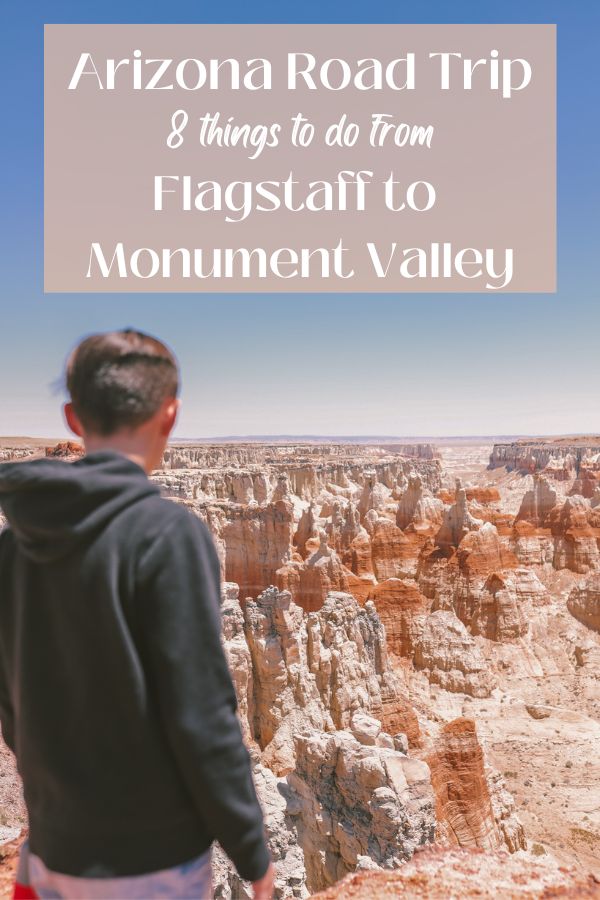

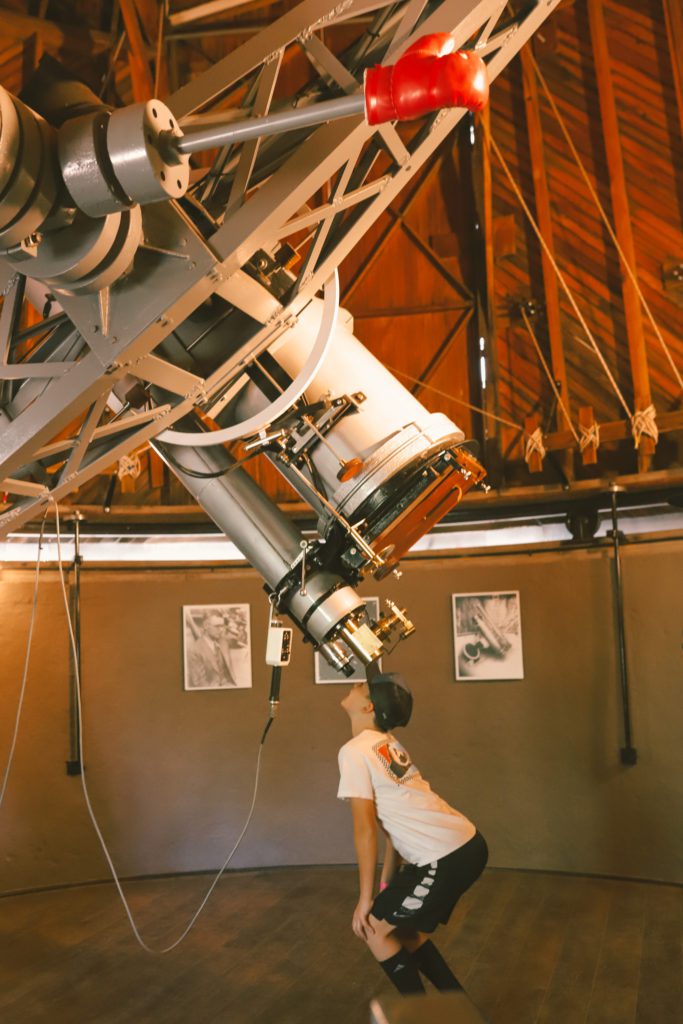
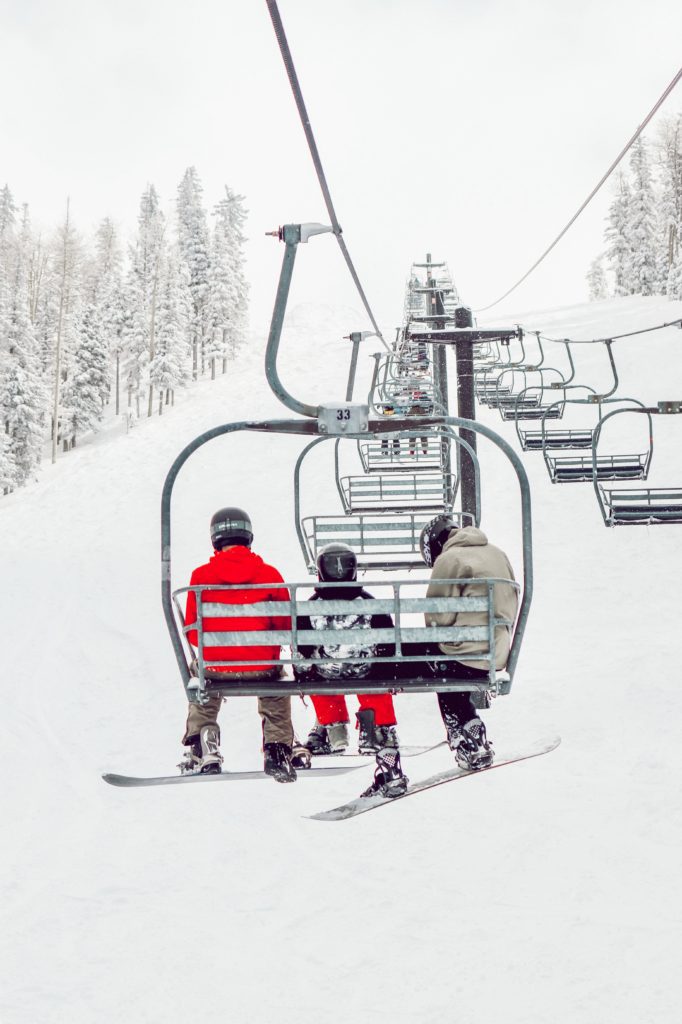
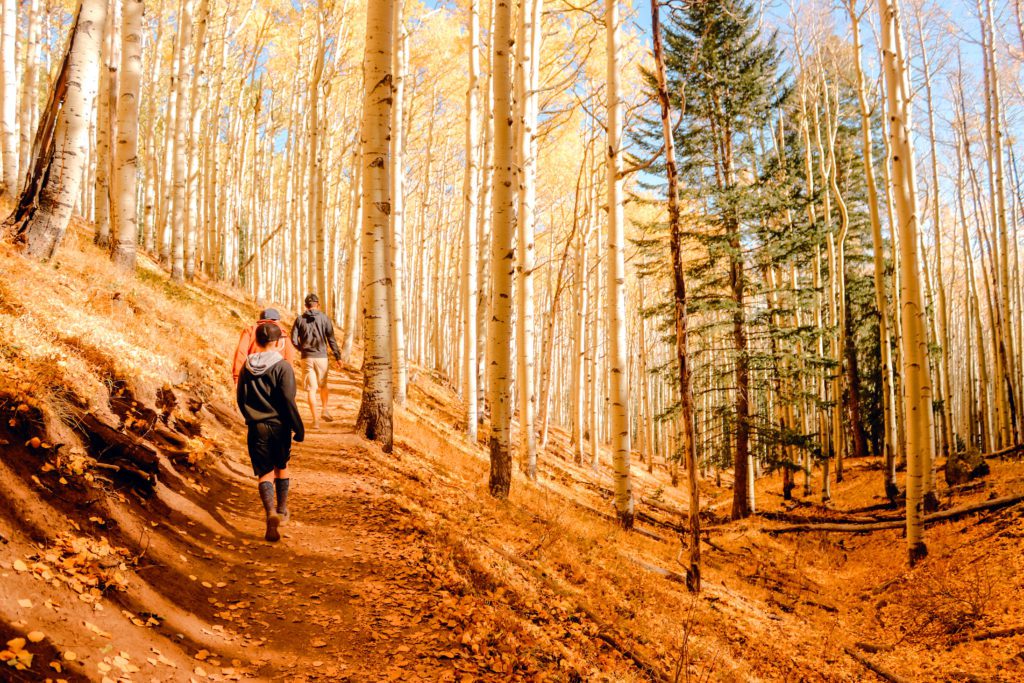
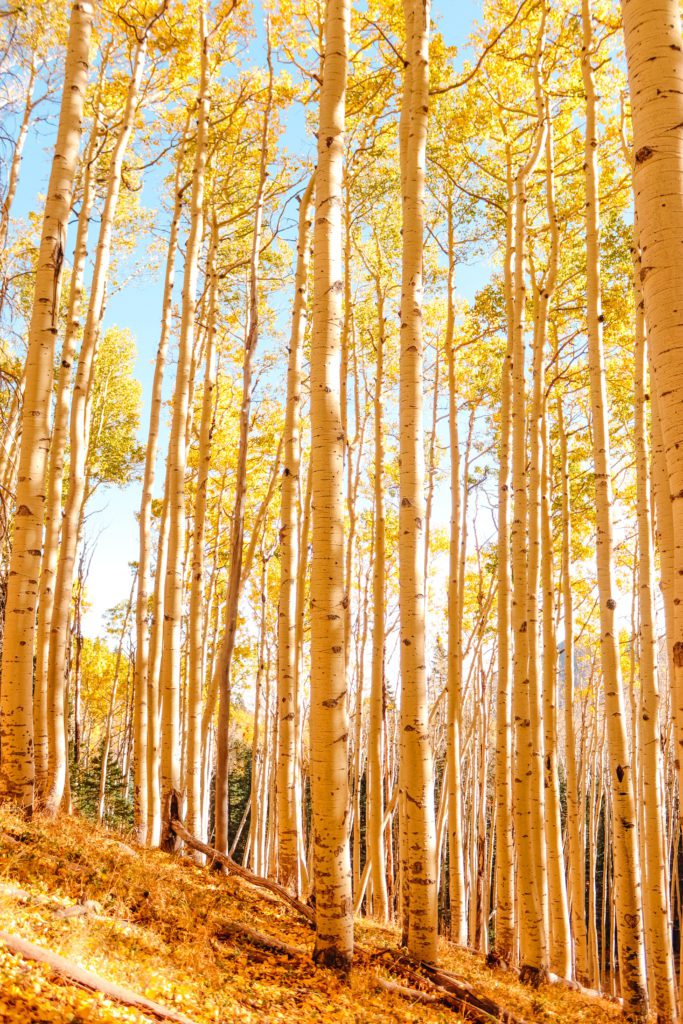



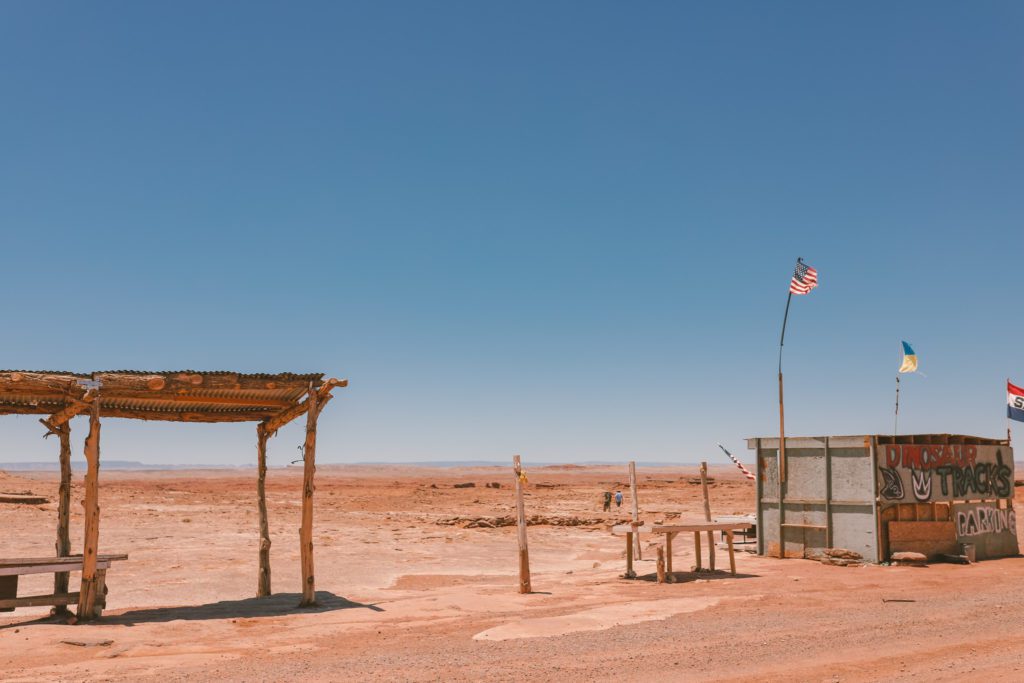
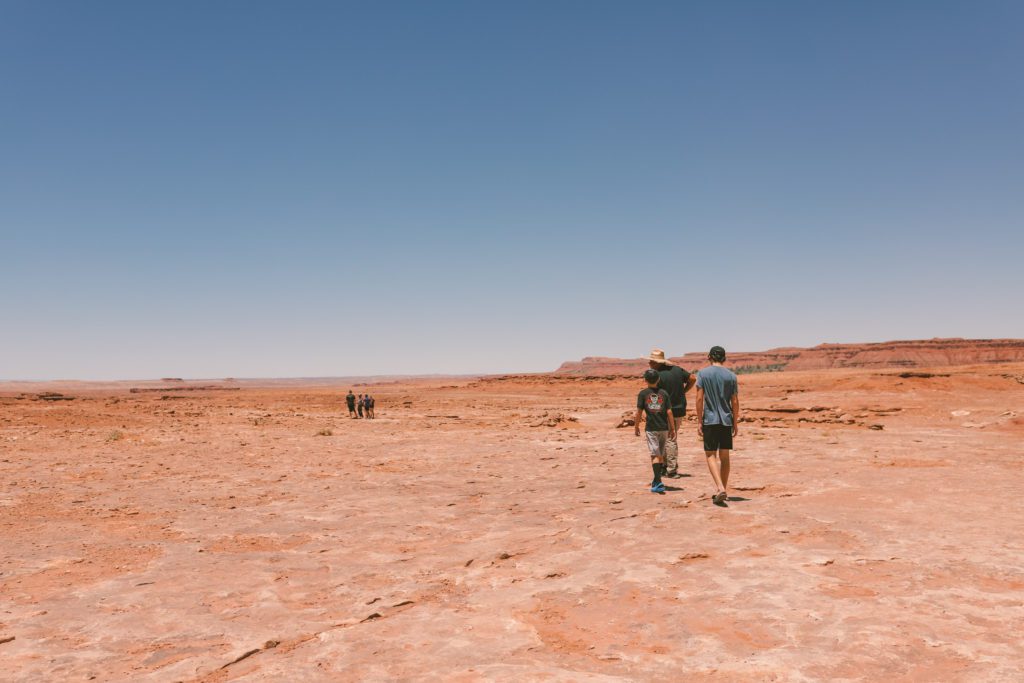
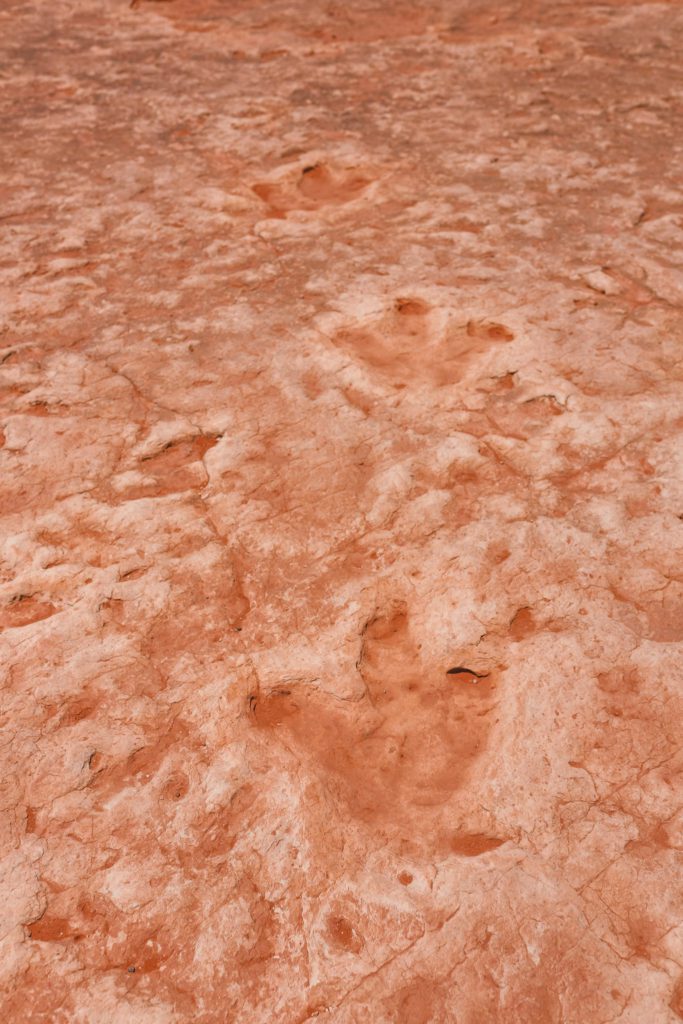
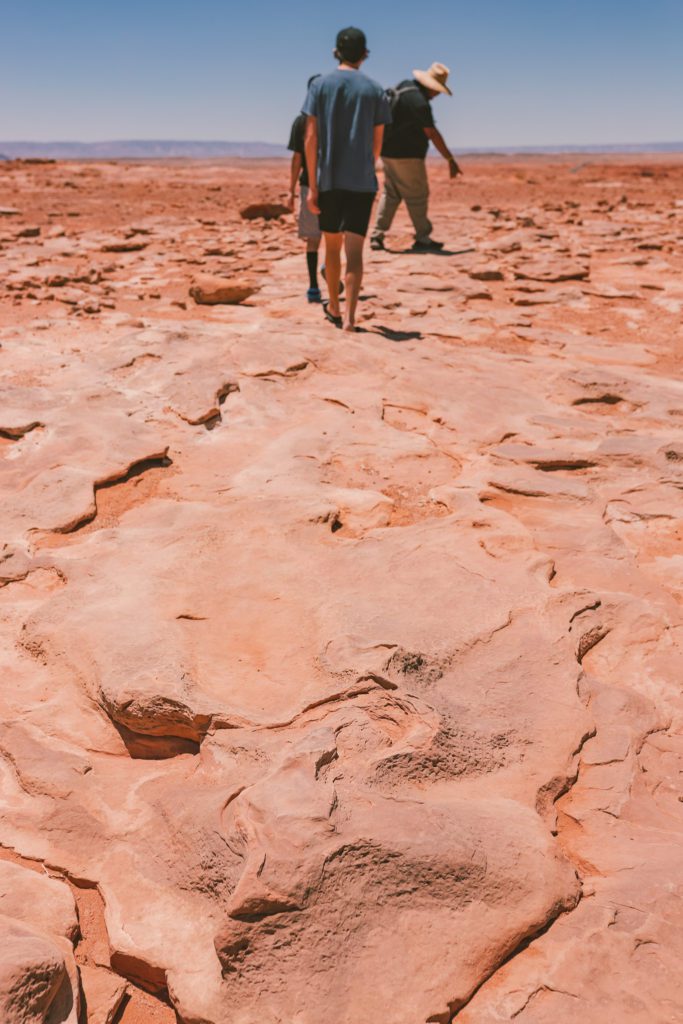
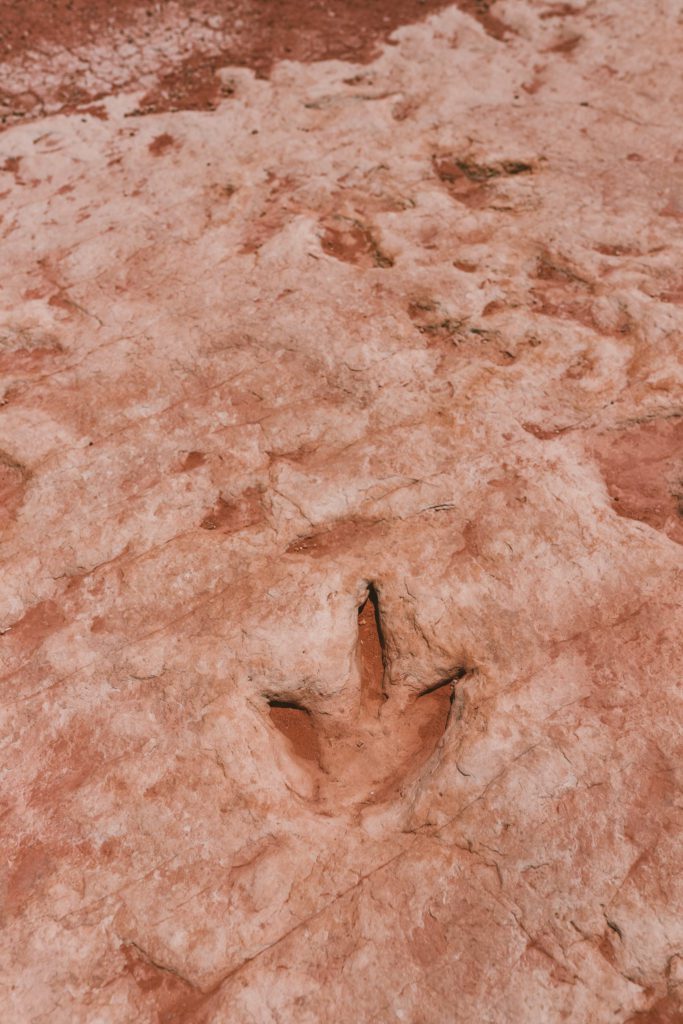
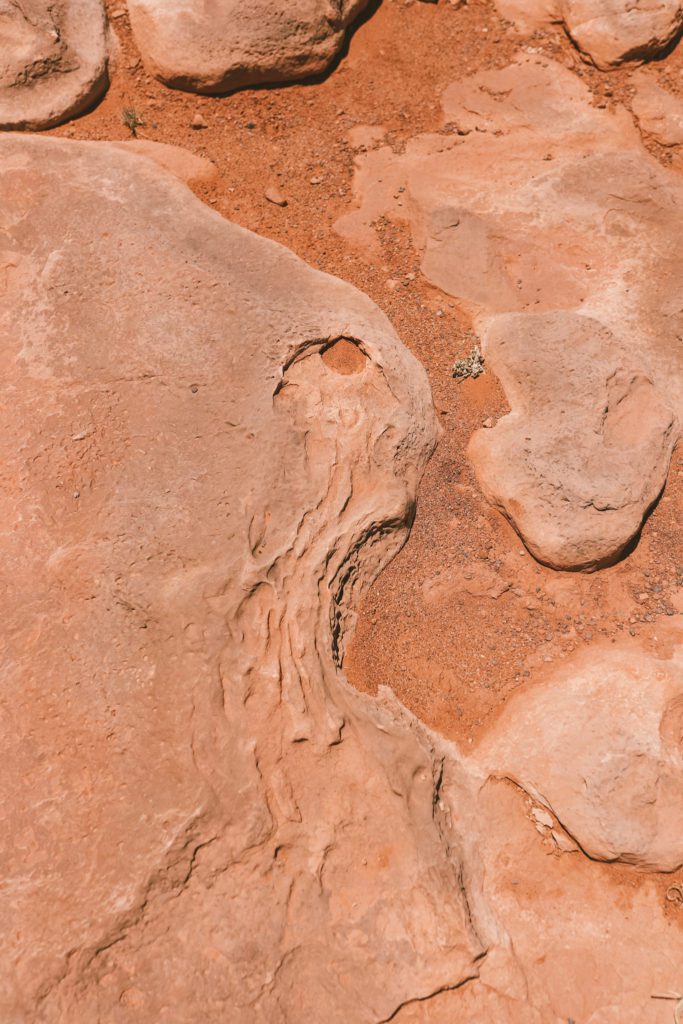
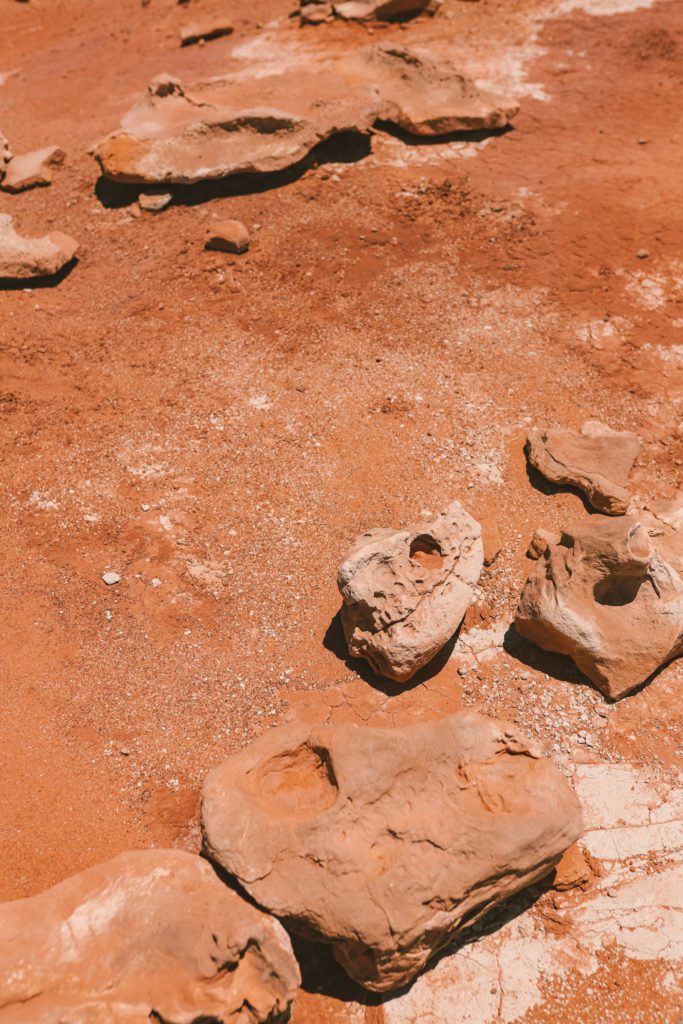
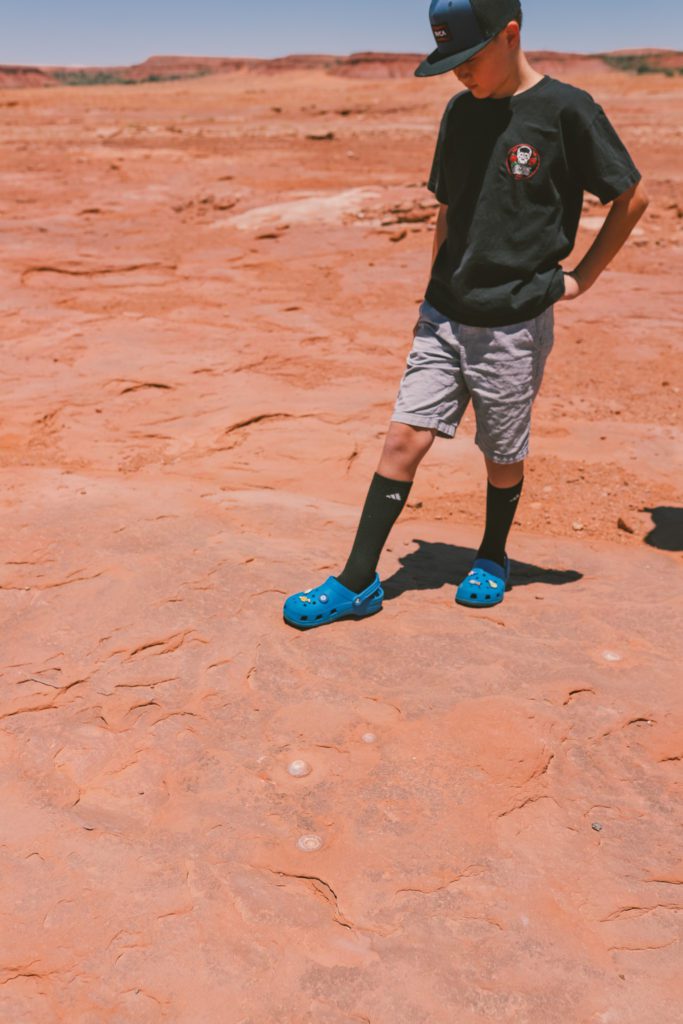
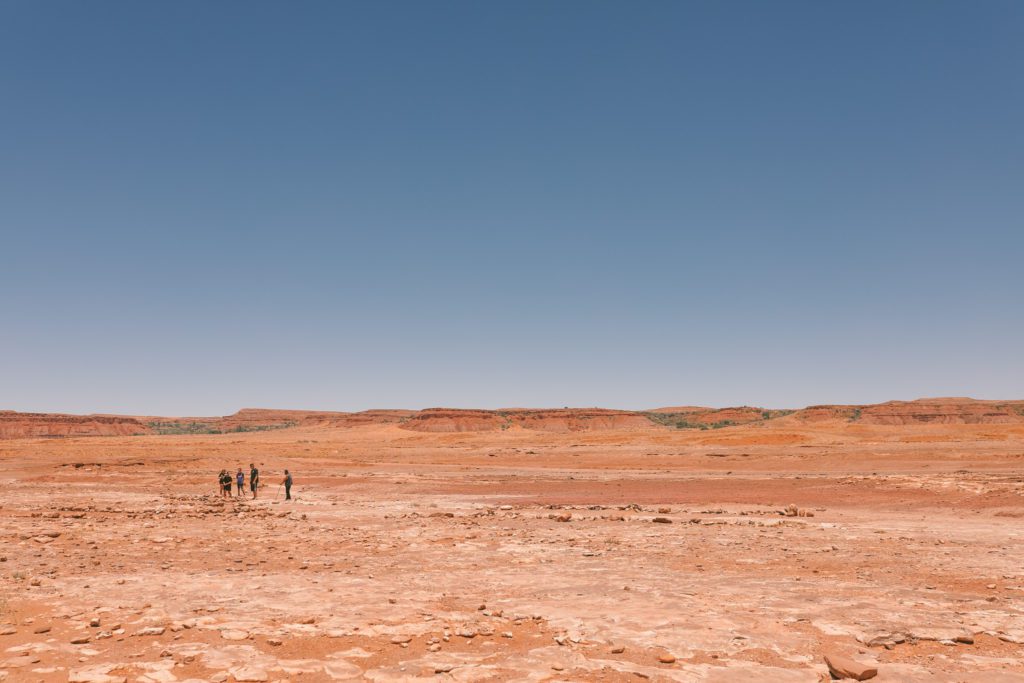
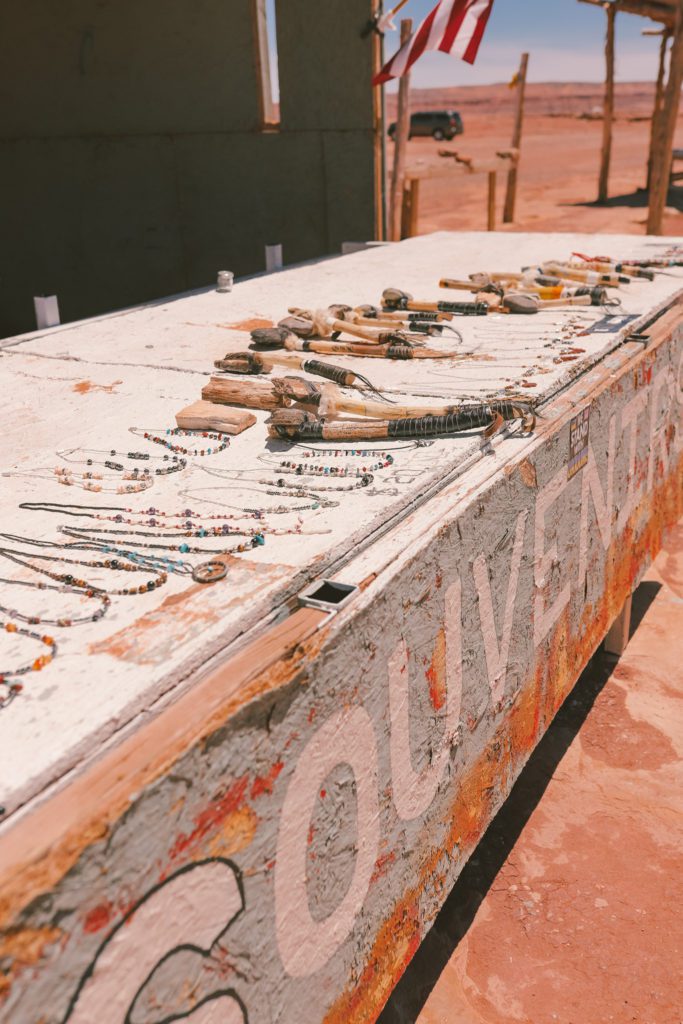
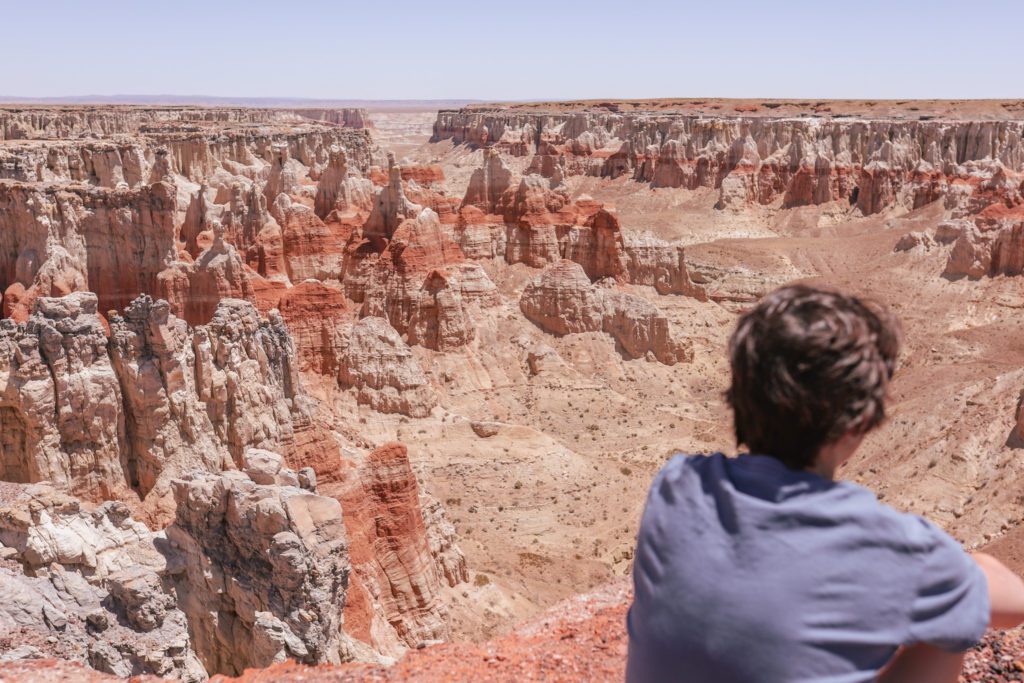
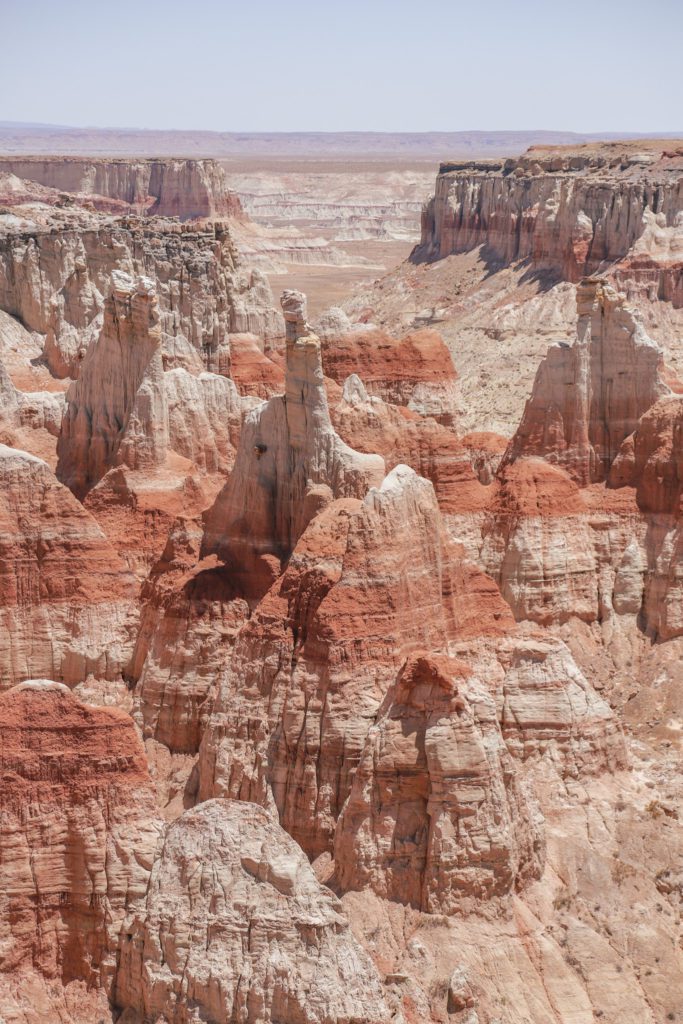
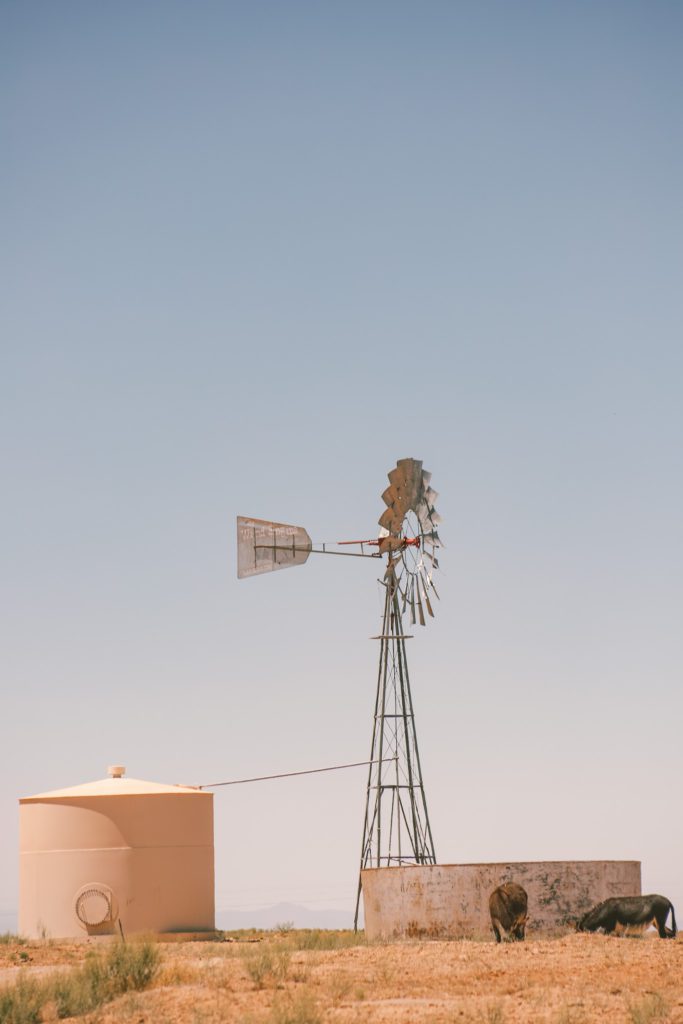
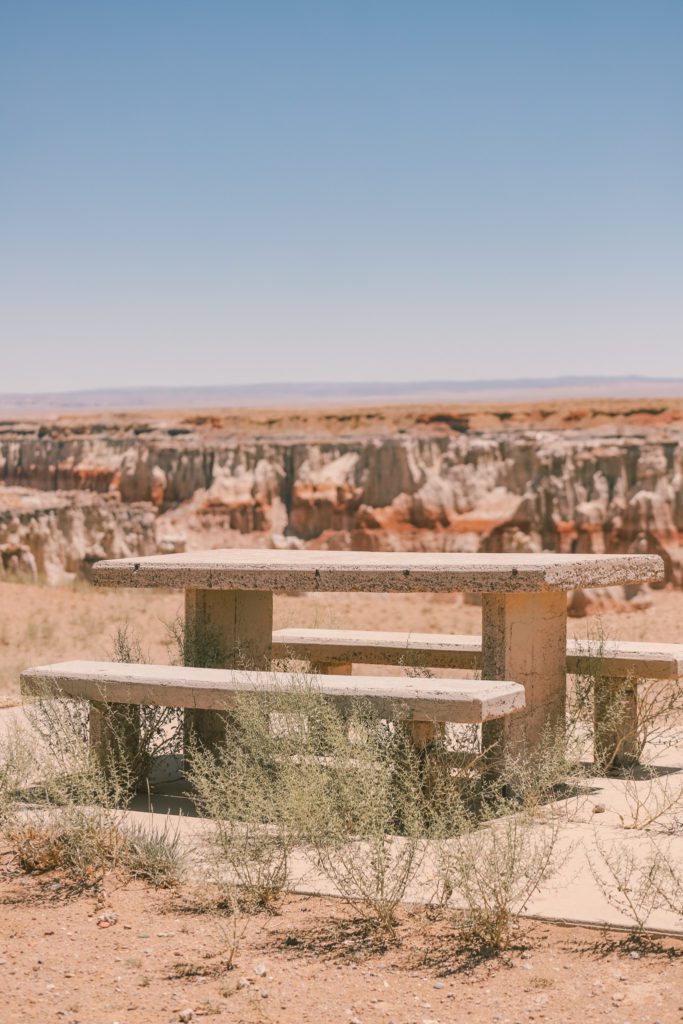
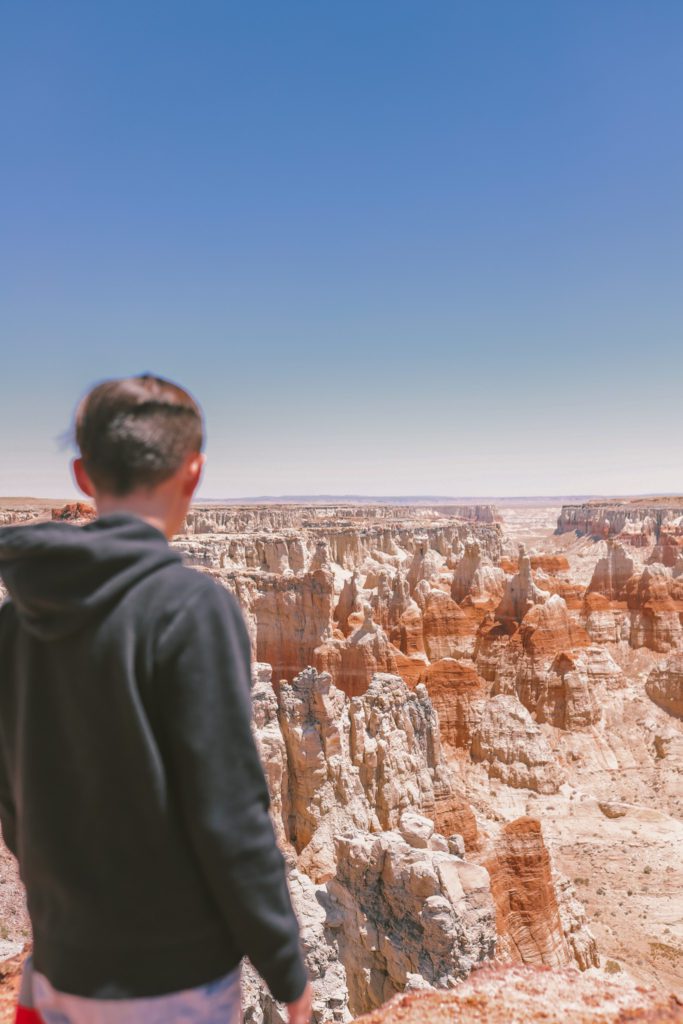
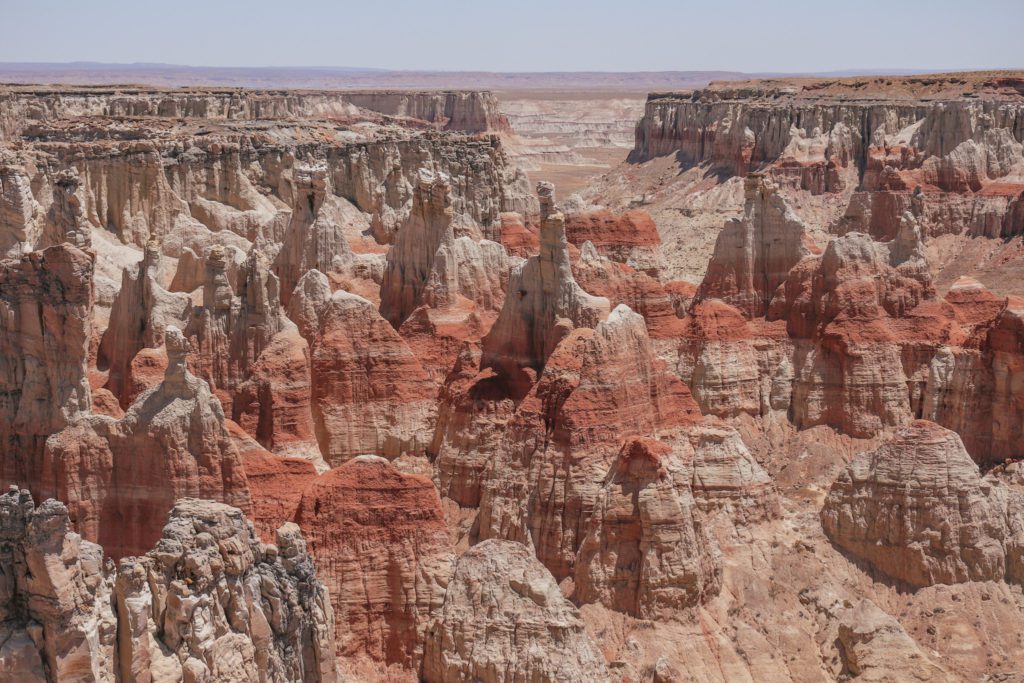
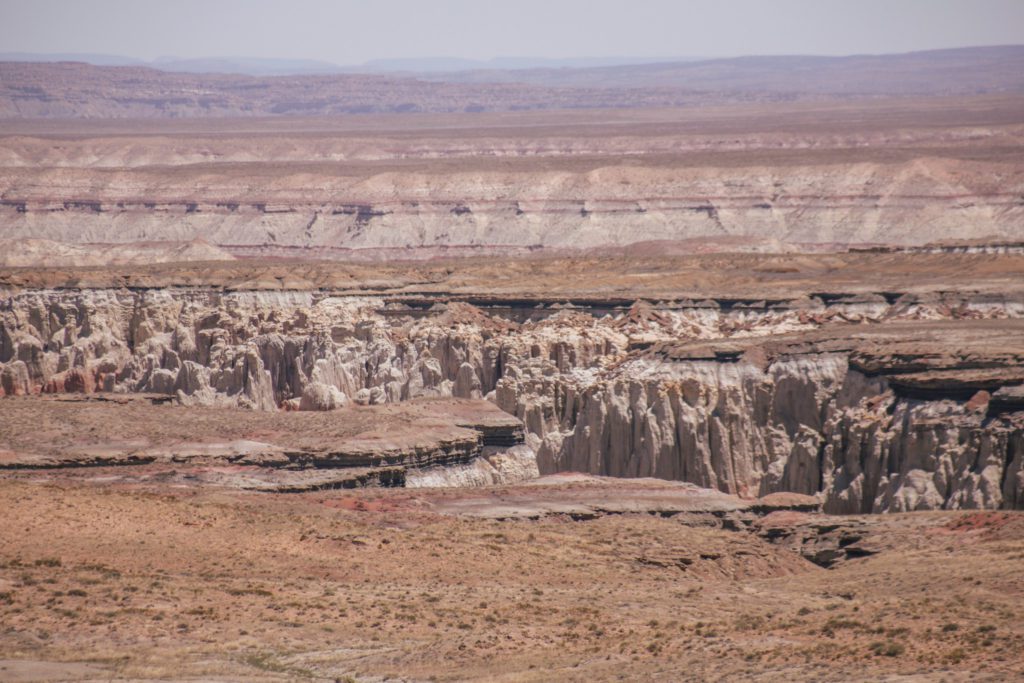
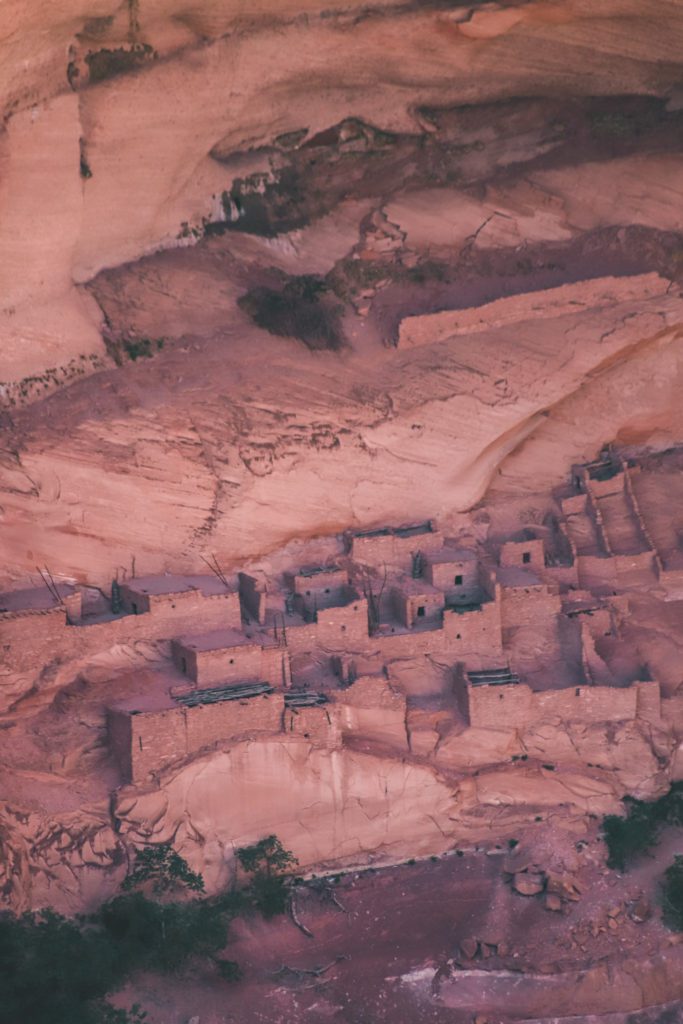
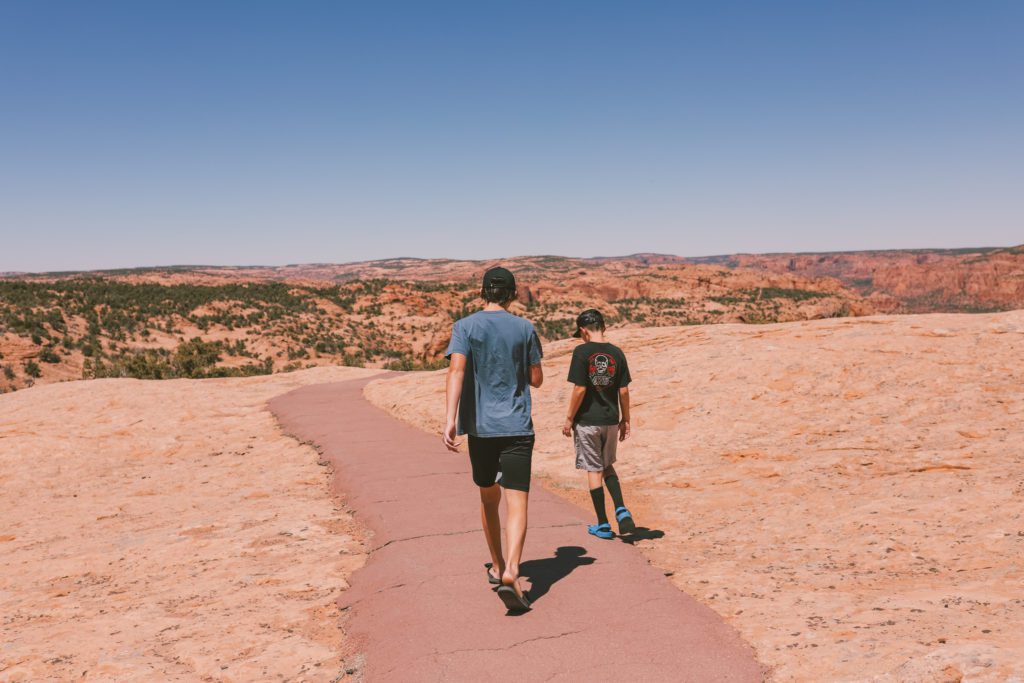
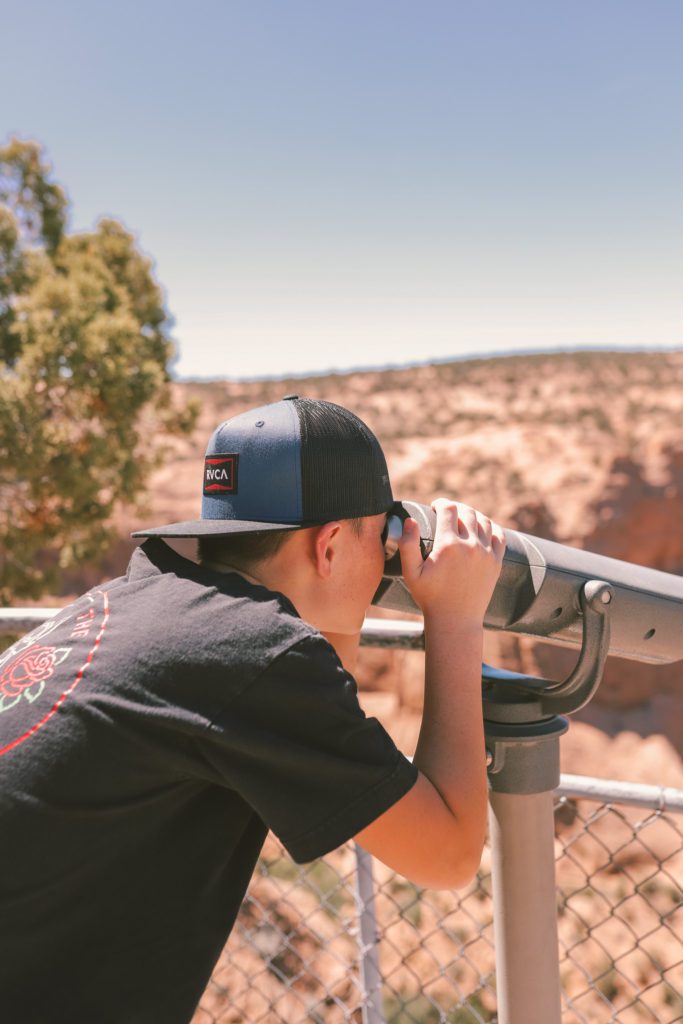
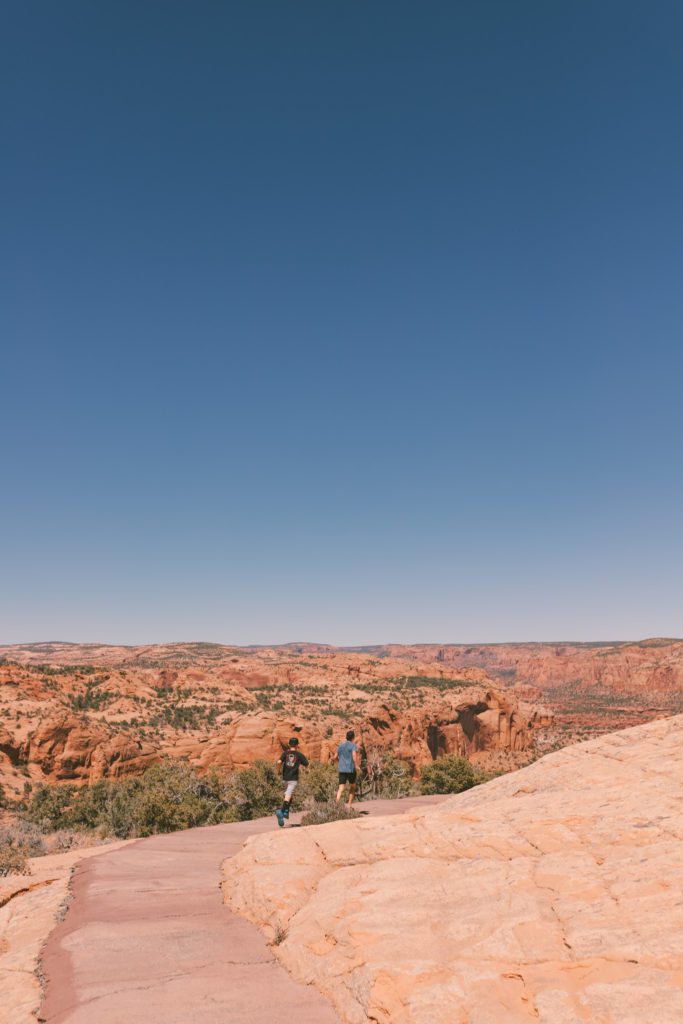
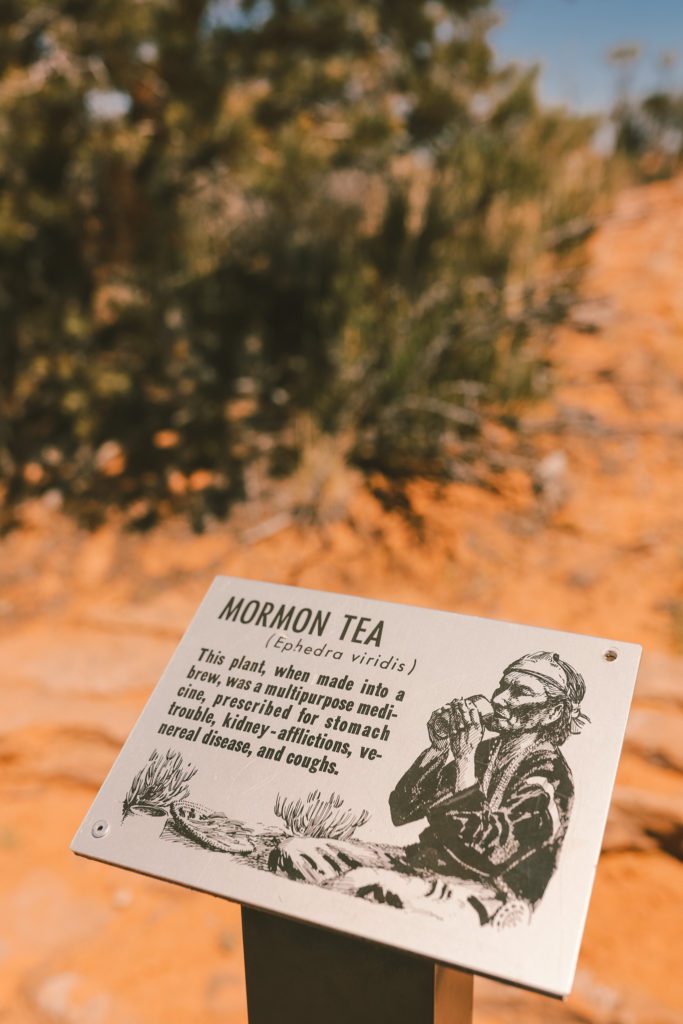
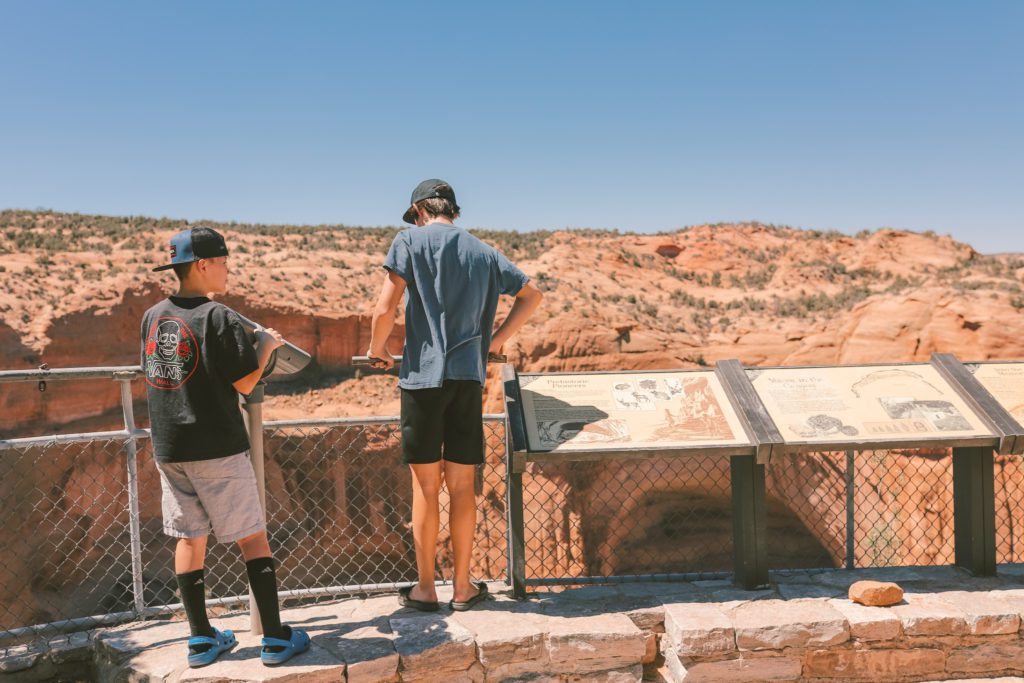
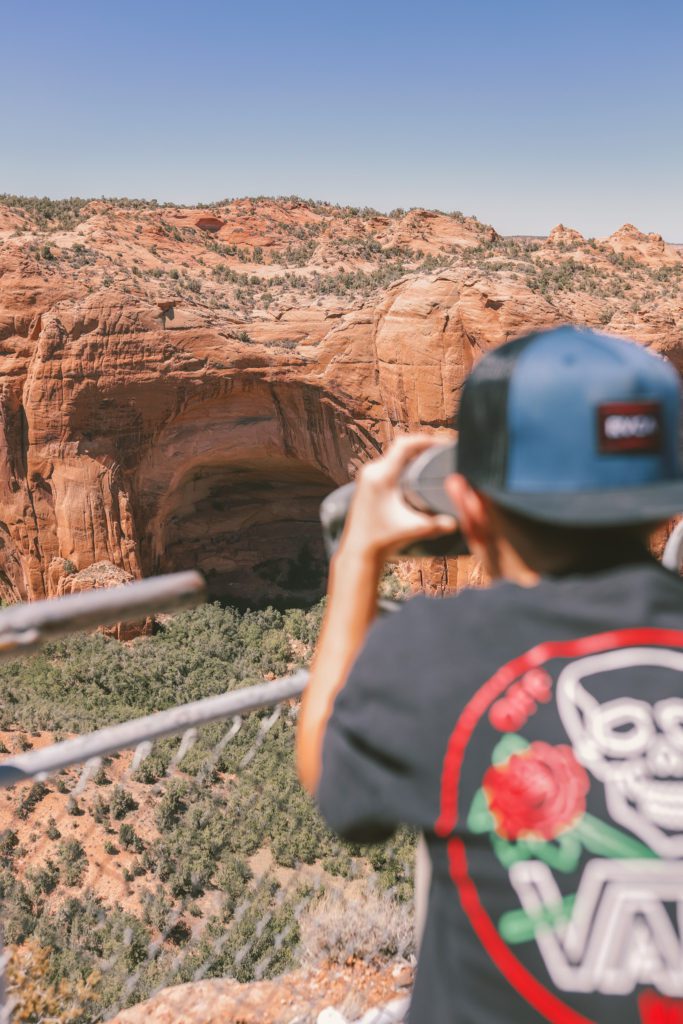
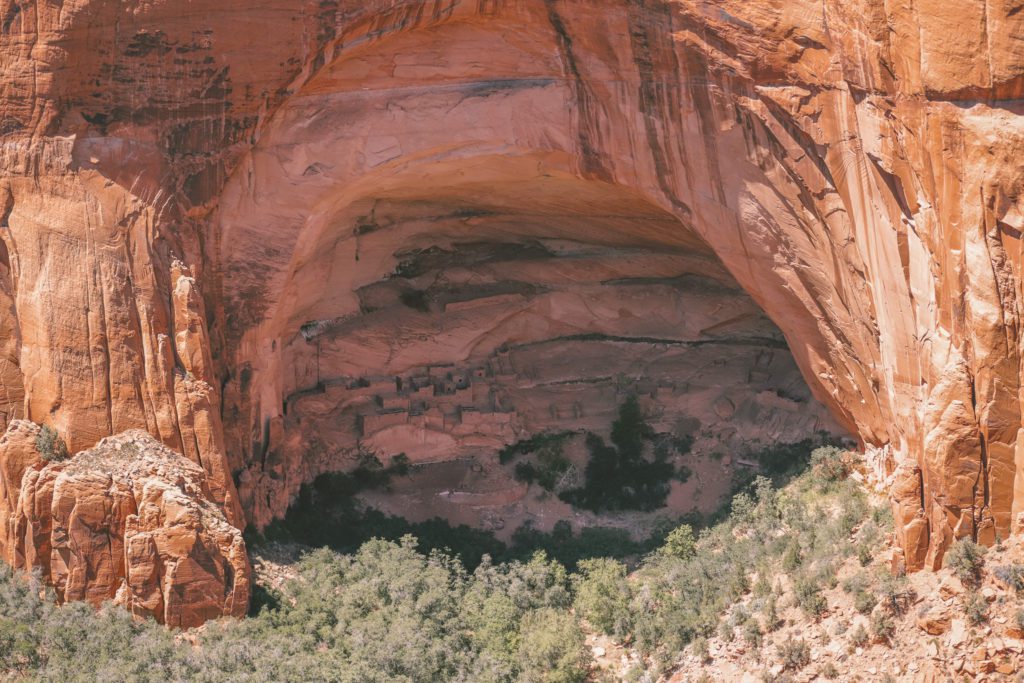


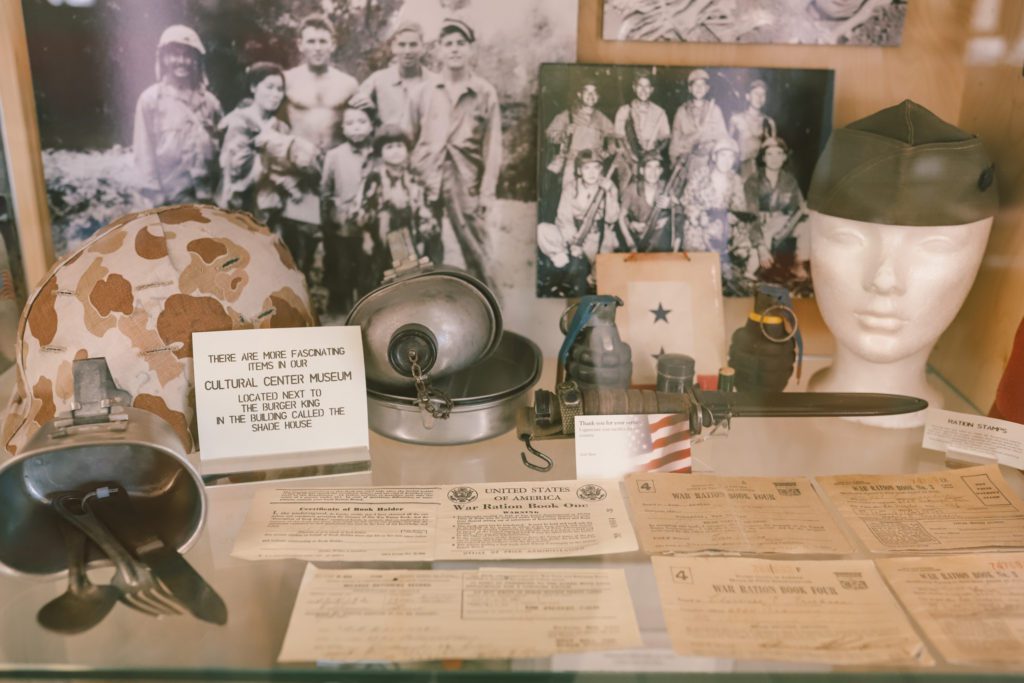
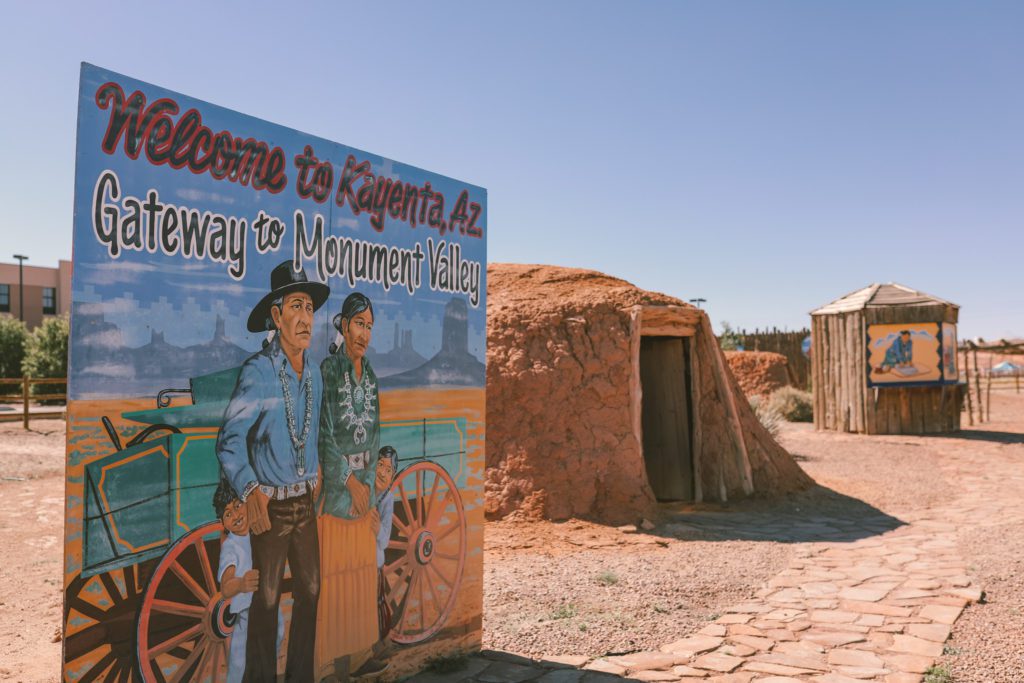
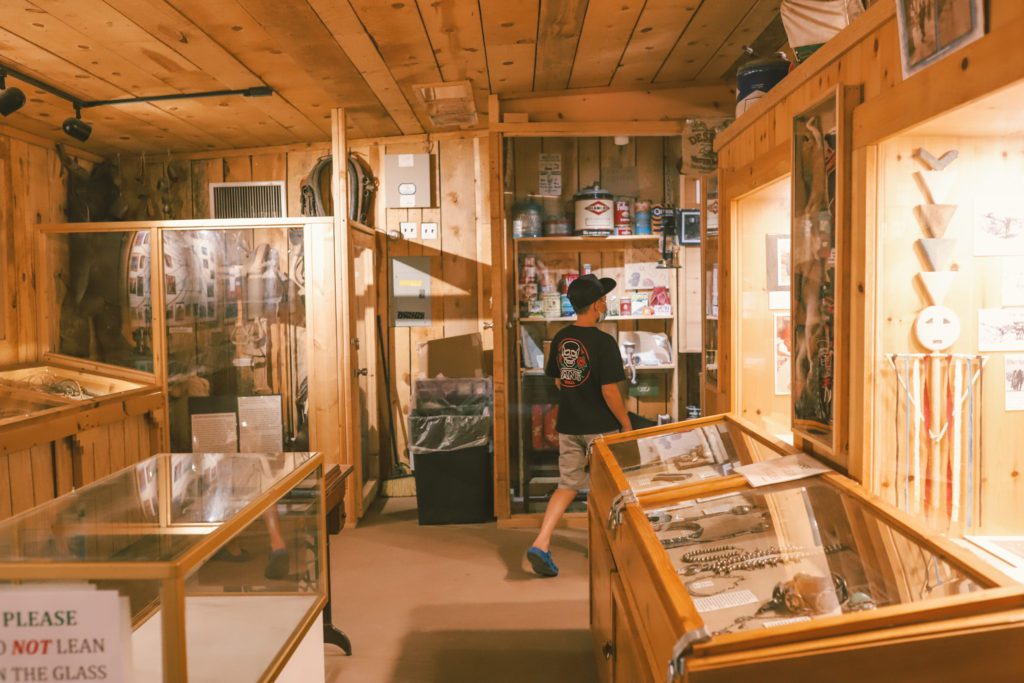
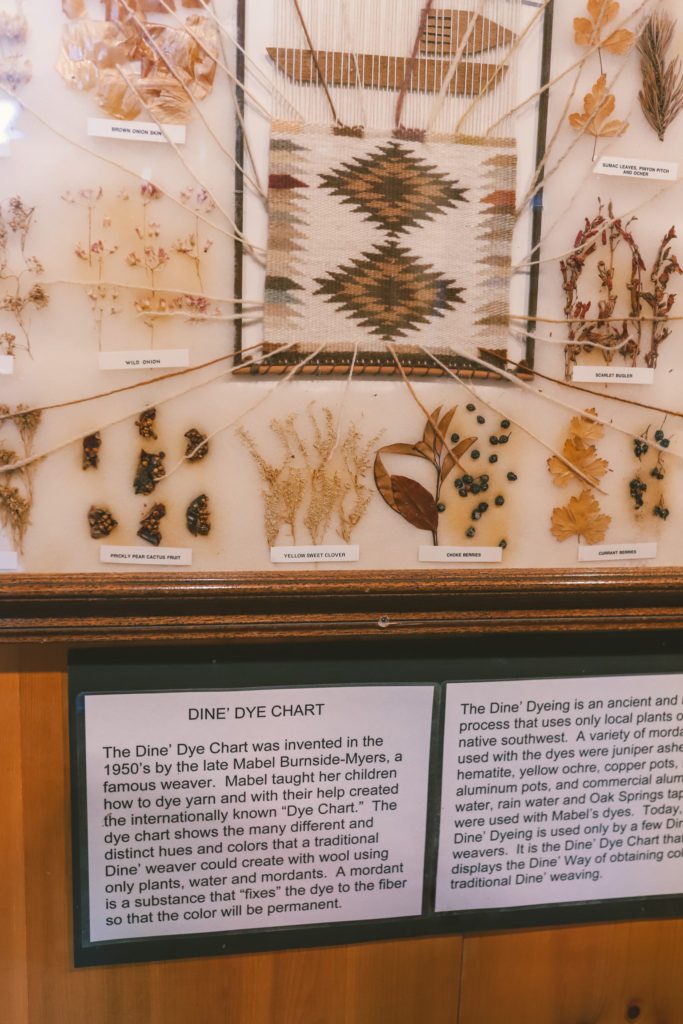
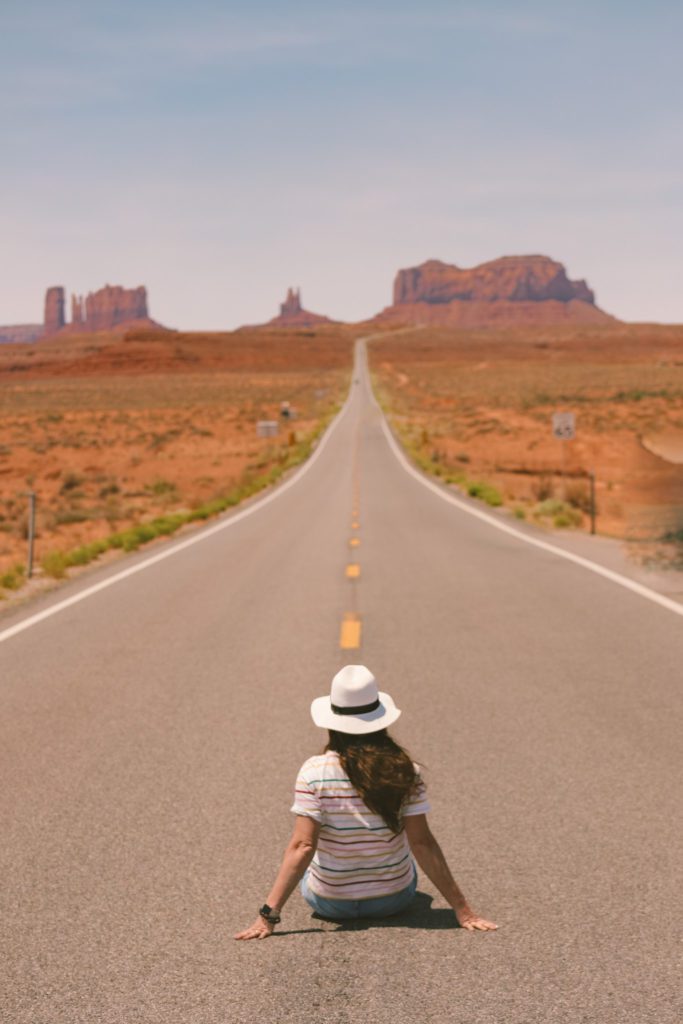
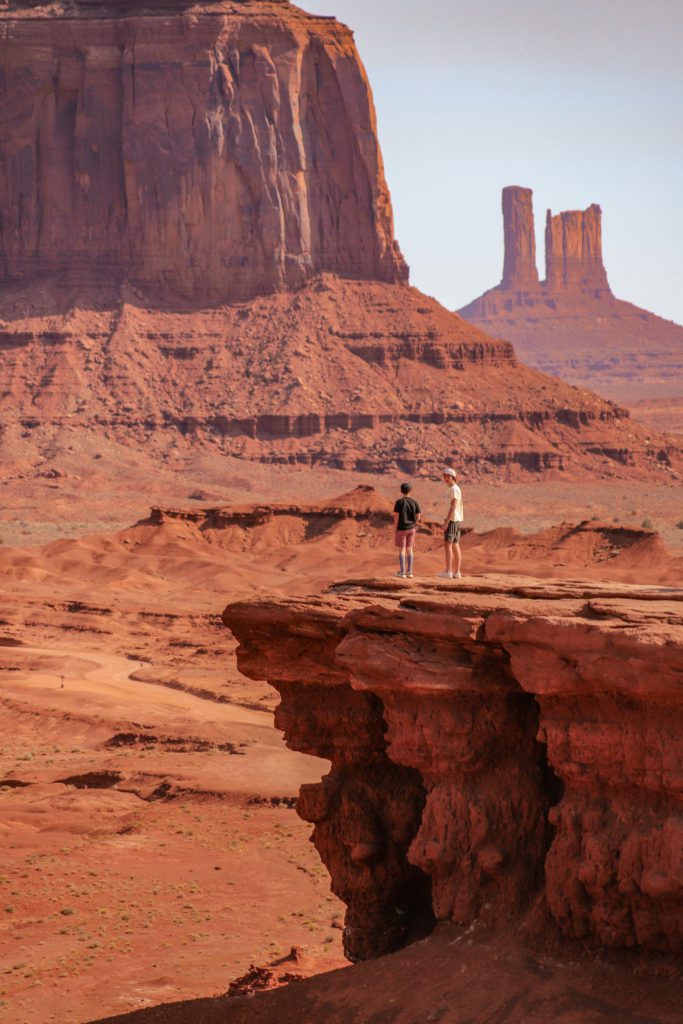
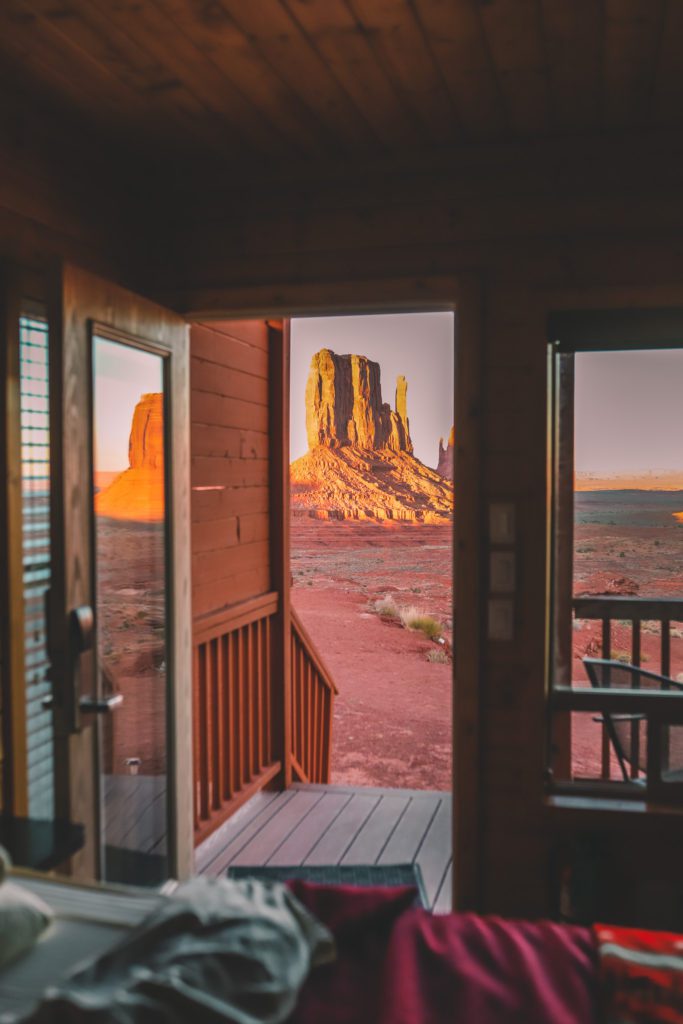

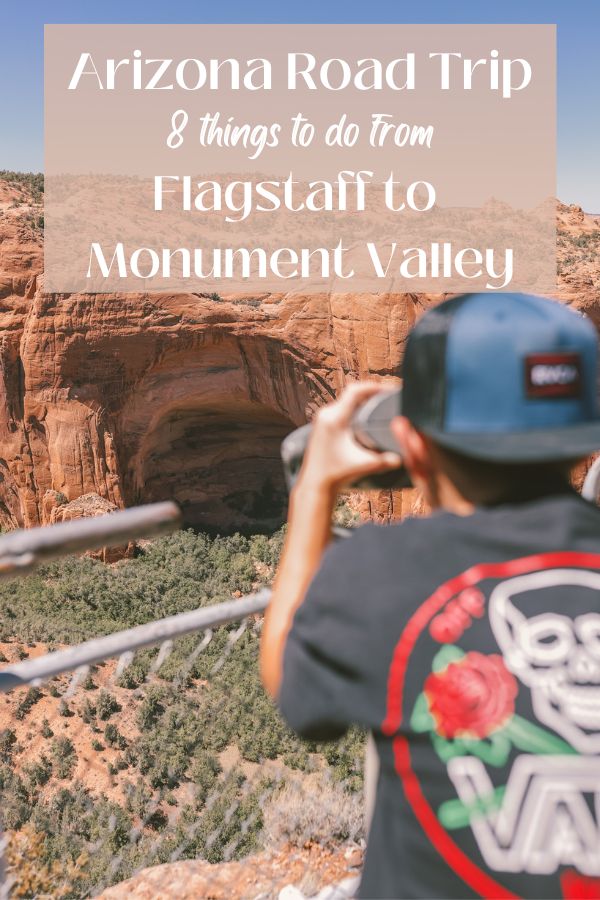



[…] If you’re looking for more roadside stops, be sure to check out our guide Arizona Road Trip: 8 Things to do from Flagstaff to Monument Valley! […]